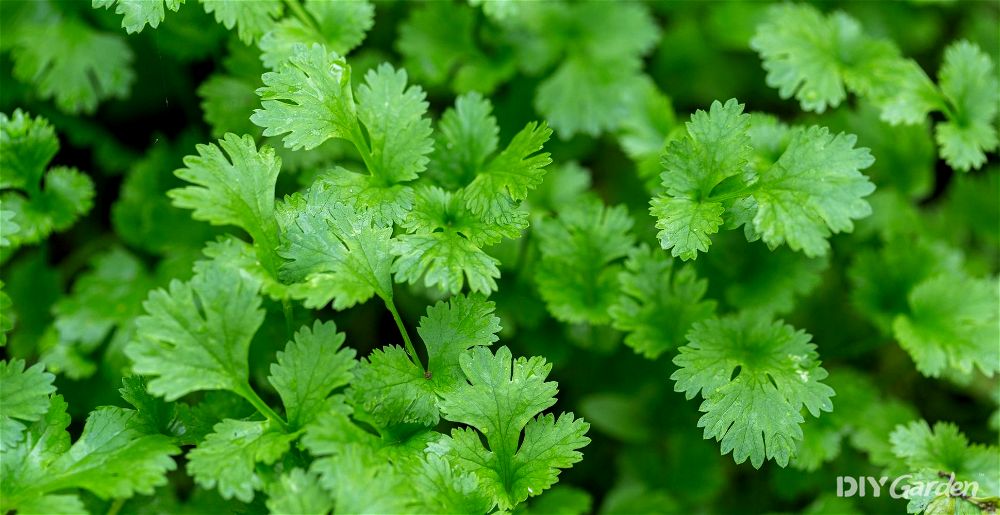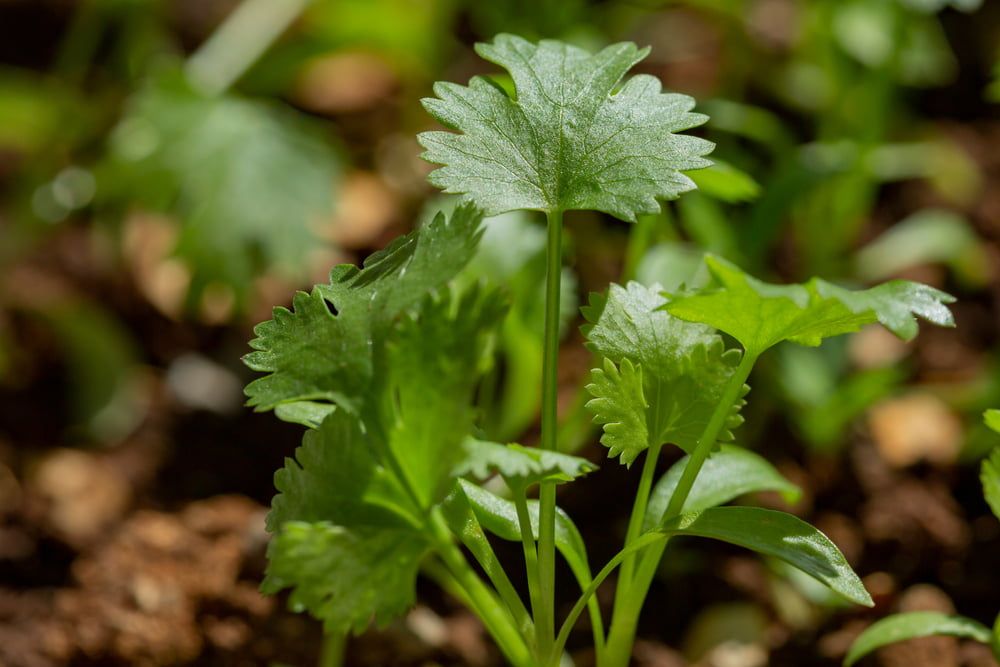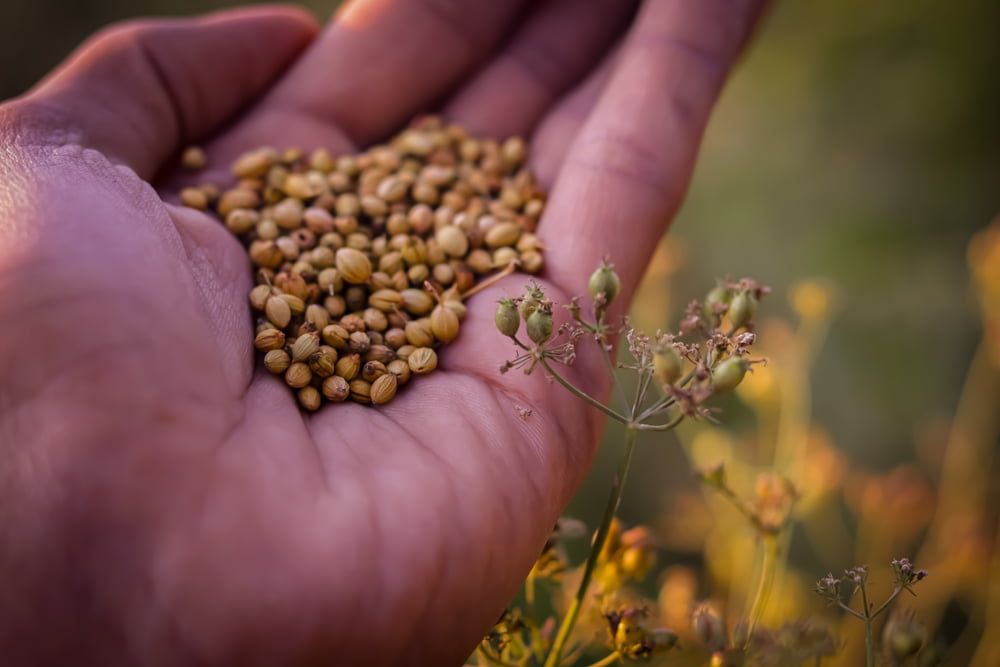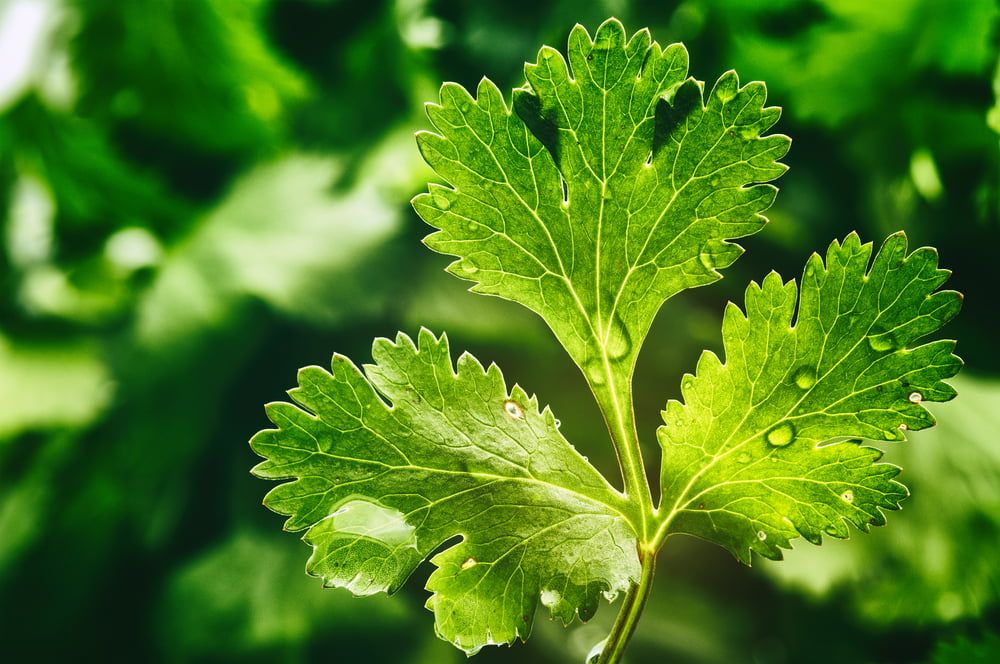
Coriander, which is also known as cilantro, tends to be a herb that people either love or hate. While many revere the plant for being aromatically citrusy, others find the flavour of coriander to be quite soapy. However, chances are that if you’re reading up on how to grow coriander, it’s a herb that you enjoy eating. Whether you want to grow the plant for its edible leaves and stalks or you love to cook with coriander seeds, here’s what you’ll need to do to harvest your own.
Growing Coriander: A Quick Snapshot
When to Sow – Mar-May
When to Plant – Apr-Sep
When to Harvest – Jun-Nov
Average Yield per Plant – 150g of leaves/7g of seeds
Spacing – 10-15cm
Depth – 1cm
How to Grow Coriander at Home
Coriander is closely related to parsley, and, just like parsley, it’s an easy herb to grow. Granted, it isn’t frost-hardy and doesn’t like too much heat either, but if you manage to find the perfect middle ground, you’ll soon have some beautifully lush and leafy coriander plants.
Growing Requirements for Coriander
Although coriander loves the sun, it does also need to be kept cool. Expose it to temperatures above 24°C and it will start to bolt. This can make finding the perfect growing spot a little tricky. However, try picking somewhere that receives full sun in the morning, but is then partially shaded in the afternoon, when the sun is at its strongest.
Coriander does best in fertile soil. Your soil should also be very well-draining – wet feet will quickly cause coriander plants to rot.
In terms of size, coriander doesn’t need too much space. Expect your plants to be between 20-40cm tall and wide. This makes the herb ideal for slotting in between other crops that you may be growing. You’ll be able to benefit from its companion plant properties too – it helps to speed up the growth of cabbages and carrots, while attracting beneficial insects.
How to Grow Coriander from Seed
Coriander grows quickly from seed, making it easy to successionally sow. Try to sow some seeds every three to four weeks to ensure that you have a fresh supply of coriander to harvest throughout the summer and autumn.
Coriander can be direct sown once the weather has warmed up in the spring. However, if you live in a cooler climate with unpredictable weather, it would be a good idea to start your seeds off under cover before planting your seedlings out. If you decide to do this, go with deep pots or modules. Coriander produces a very long taproot, so the deeper your pots are, the less chance you’ll damage this when transplanting your seedlings.
How to Sow Coriander Seeds in Modules:
- Fill your modules with a multi-purpose compost
- Water your modules well, making sure that the drainage holes at the bottom aren’t blocked
- Sow one seed into each module, about 1cm deep
- Water lightly again and then place your modules somewhere warm. Consistent temperatures of between 18-21°C will give you the best germination rates
It usually takes between one to three weeks for coriander seeds to germinate. Keep your modules moist throughout this time, as well as once your seedlings emerge. You’ll also need to move your modules somewhere bright once you notice your seeds sprouting, giving them plenty of sun until it’s time to plant them out.
How to Direct Sow Coriander Seeds:
- Prepare your growing area by weeding it and ensuring that the soil is well-draining. If it isn’t, mix in some well-rotted animal manure to improve drainage and add fertility
- Sow your seeds about 1cm deep in the soil. If you’re sowing in rows, space each row 30cm apart
- Give the soil some water if it was dry, and keep it moist throughout the season
After one to three weeks, your seeds will germinate. Once they do, give them a week or so to grow on before thinning them out, leaving 10-15cm between each plant.
How to Plant Coriander Outside
Once you’ve had your last spring frost, you can move your indoor-sown coriander seedlings outside. However, since coriander can be a little delicate, harden your seedlings off for a week before moving them out permanently. This will help them to adapt to outdoor conditions, saving them from transplant shock.
Before you start planting, thoroughly weed your growing area and amend the soil if necessary. Then, dig small holes in the ground that are just slightly larger than the root balls of your seedlings. Space each hole about 15-20cm apart. Spacing is important with coriander – give your plants plenty of room and they’ll be larger and bushier, but they’ll also be more susceptible to the heat. On the other hand, keep them closer together and they won’t grow as wide, but the foliage will protect the roots from the sun, keeping them cool.
Be very careful when removing your coriander seedlings from their modules. Take care not to damage the taproot as you do this. Place each seedling into the holes that you’ve dug and then cover them back over with soil. Firm the soil down around each plant and then water them well.
How to Plant Coriander in a Greenhouse
Coriander does well in a greenhouse during the spring, autumn, and early winter, but it’ll struggle with that extra heat in the summer. Try to time things right, so that your summer crops are grown outside.
When planting coriander in a greenhouse, follow the same steps as when planting outside. You may also want to consider growing your coriander in containers, so that you can move them in and out of your greenhouse depending on the weather. If you decide to do this, use containers that are at least 25cm deep and wide. Going with anything smaller will likely cause your plants to end up root bound, resulting in their early death.
How to Care for Coriander
Coriander is pretty simple to care for. Here’s what you’ll need to do:
Watering Coriander
Knowing how often and how much to water coriander is the trickiest part of growing this herb. The soil needs to be kept consistently damp – overwater your plants and they’ll end up rotting, but under-water them and they’ll bolt.
Ideally, your coriander plants should be getting around 2.5cm of water a week. Rainfall will often provide this, but do keep checking the soil around your plants to make sure that it doesn’t dry out. Manual watering will be needed during dry, or particularly hot, spells.
Feeding Coriander
If you’re growing your coriander in fertile soil, then fertilising your plants will not be required. However, if you notice them struggling in any way, an organic liquid feed should help to perk them up. Avoid using high-potassium fertilisers on coriander plants – this encourages flowering, which you definitely don’t want to be doing.
Weeding and Mulching Coriander
Weeds can quickly smother out coriander plants, especially when they’re still young. This makes it important to regularly weed around your plants.
Nobody wants to spend hours weeding, so consider mulching your plants. Laying an organic mulch around your coriander can really help to boost growth – not only will this suppress weeds and improve moisture retention in the soil, but it’ll also feed your plants while keeping their roots cool.
How to Harvest Coriander
When and how you harvest your coriander will depend on whether you’re growing it for its leaves or its seeds. While you can harvest both from the same plant, seed quality isn’t great from coriander varieties bred for leaves, while leaf production is usually lacking in varieties bred for their seeds.
Harvesting Coriander Leaves and Stalks
Once your coriander plants are about 10-15cm tall, you can start to harvest their leaves. The more leaves that you pick, the more the plants will produce, so don’t hold back! Coriander will regrow several times after being cut back.
To harvest your coriander, either pick off individual leaves as and when needed, or snip off entire stems. The stalks taste just as good as the leaves, so you’ll be able to use those too.
If your plants start flowering and you don’t want to harvest any seeds, then go ahead and pick those flowers to use as a garnish. Again, their flavour matches that of the leaves.
Harvesting Coriander Seeds
If coriander seeds are what you’re after, you’ll need to wait for your plants to flower. Once those flowers have died off, they’ll be replaced with peppercorn-sized seeds. In an ideal situation, you would wait for those seeds to dry on the plant before harvesting them. However, as soon as they do dry on the plant, they’ll quickly drop to the ground.
This means that you’ll need to harvest them before they get to that stage, while they’re still green. Simply snip off entire stems and place them seed-side down in a paper bag, so that the ends of the stems are sticking out of the bag. Keep this somewhere cool and dry.
After about three weeks, the seeds should have dried. Give the bag a shake and the seeds should easily dislodge from the stems and fall into the bag. You can then remove the stems and any other plant debris.
How to Store Coriander
Coriander leaves can be wrapped in paper towels and then stored in an airtight container in the fridge. You’ll need to replace the paper if you notice any moisture on it – this is what will cause the leaves to rot.
Alternatively, place your harvested stems into a jar of water. Replace the water every day or so and this will keep your coriander fresh for several weeks. The stems may even start to produce new leaves!
For long-term storage of coriander leaves, freezing is your best option. Wash them, dry them, place them into a bag or container, and then keep this in your freezer. They’ll last for about four months – the longer you wait to use them, the less intense their flavour will be.
Storing coriander seeds is easy. Since your seeds have been dried, simply place them into an airtight container, where they’ll keep for a couple of years.
How to Prepare & Cook Coriander
Coriander doesn’t require much preparation. Wash and dry the leaves and they’re ready to be used. The seeds don’t need to be prepped either – they’re ready to cook with once they’ve dried.
Cooking with Coriander Leaves and Stems
While coriander stems and leaves are most commonly used as a garnish, here are a few ideas to really showcase their flavour:
- An Indian-inspired coriander relish
- Carrot and coriander soup
- Sweetcorn and coriander fritters
- An Aji sauce made with coriander, chilli, mayonnaise, and lime
- Watermelon and coriander salad
Cooking with Coriander Seeds
For maximum flavour, dry-toast your coriander seeds in a pan. You’ll know that they’re ready when they start to release their delicious aroma. After this, you can use them in everything from curries to soups.
Alternatively, you could also grind the seeds to make coriander powder. This works well in pastes and doughs – any dish that wouldn’t benefit from the texture of the whole seeds. If the powder is what you want, grind the seeds in small batches as and when you need them. Powdered coriander will lose its aroma so much faster than the seeds will – the fresher your powder is, the better it will taste.
Common Coriander Problems
There aren’t that many pests and diseases that bother coriander plants, but the ones to look out for are:
- Slugs – these pests love young seedlings. You’ll notice holes in leaves and a silvery slime trail criss-crossing over your plants. There are several organic slug deterrents out there, from beer traps and copper tape to sheep fleece mulches
- Aphids – these tiny bugs will suck the sap from your coriander plants, which will stunt their growth and could even kill them. Use a jet from a garden hose to dislodge small clusters, or consider an organic spray for larger infestations. Encouraging natural predators, such as ladybirds, would also be beneficial if aphids commonly cause problems in your garden
- Bolting – if your coriander seeds are flowering before they’ve started to properly produce any leaves, then this means that your plants are unhappy. Any form of stress can trigger bolting in coriander, so make sure that temperature, moisture, nutrients, and ventilation are all as they should be
Popular Coriander Varieties to Grow
Variety is important when growing coriander. The variety that you choose should depend on whether you want to harvest leaves or seeds. While it’s true that varieties bred for their leaves will still produce seeds, these won’t be quite as flavourful as those that have been bred for their large, aromatic seeds.
- Coriander Sativum – this variety is one of the few that work well for harvesting both leaves and seeds
- Lemon – loved for its intense citrus-scented leaves
- Leafy Leisure – a slow-bolting variety with heavy leaf production
- Confetti – has unusual, finely divided, fern-like foliage
- Calypso – bred in the UK, this variety grows quickly when cut back, yet is slow to bolt
- Santo – produces very large flower heads that quickly turn into delicious seeds
Conclusion
Not only does coriander add such a distinct flavour to dishes, but it’s also packed with nutrition. Even if this is a herb that you wouldn’t use very often, the flowers are loved by pollinators, especially honeybees, making the minimal effort required to grow it more than worth it.







